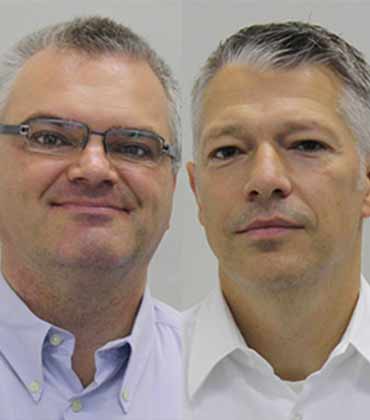Greenerity is a part of the Toray Group, a significant player in the global tech market boasting nearly a century-long history in the chemical industry. Toray’s expertise, from green hydrogen production to transportation, storage, and usage, has been helping the world transition to using hydrogen gas as its main form of energy.
“We benefit from their extensive resources, research capabilities, and industry know-how, which positions us as an innovative and influential player in advancing hydrogen technologies,” says Dr. Holger Dziallas, Managing Director of Greenerity.
One of Greenerity’s key innovations is its capability to design novel membrane electrode assembly technology. It has developed catalyst coated membranes (CCM) and membrane electrode assemblies (MEA) that catalyse the conversion reaction of hydrogen and oxygen into electricity, and alternatively, use electricity to split water into hydrogen and oxygen. What makes these products truly valuable is their adaptation to the technical requirements of specific applications and the parallel development and use of advanced production processes, coating techniques, dispersion methods and assembly procedures to ensure products with high quality standards.
Greenerity is a part of the Toray Group, a significant player in the global tech market boasting nearly a century-long history in the chemical industry
With many major industrial players like Bosch, Daimler/Volvo, Cummins, Linde and Siemens investing significant money into fuel cell and electrolysis system production, Greenerity anticipates its continued growth into the commercial domain to supply MEAs and CCMs to key players in the industry caused by this powerful market pull.
What Makes Greenerity’s Innovation Stand Out in the Market
By addressing crucial factors such as efficiency, safety, and system cost-effectiveness, Greenerity is pushing the boundaries of hydrogen fuel cells and hydrogen production via electrolysis. With more than 20 years of active development and participation during the establishment of these technologies and commercial introduction, Greenerity is now in the position to integrate the most advanced materials from external partners but also from its owner, the Toray Group. For instance, Toray’s hydrocarbon-based electrolyte membrane exhibits exceptional performance at elevated temperatures. This advancement and Greenerity’s capability to design the functionality of electrodes as well as to adapt the production processes to this new material will significantly enhance the performance of hydrogen fuel cells.
Toray’s hydrocarbon membrane boasts remarkably low gas permeability as well. This characteristic not only improves the overall efficiency of fuel cell and water electrolysis devices but also enhances their safety. These qualities set hydrocarbon membranes apart from conventional materials, making them highly efficient and reliable, especially in combination with Greenerity´s know how for product and process design.
Greenerity has also made significant strides in the reduction of precious metals used in its products. Using these advanced MEAs, fuel cell vehicles (FCV) will use less platinum in line with the industry’s expectations, while electrolysis systems will require significantly less Iridium, which is in line with the conditions for a successful market growth.
Keeping an Eye on Addressing Industry Challenges
Accompanying the industry’s growth with a parallel expansion of the supply chain is the need of the hour especially for the fast-growing green hydrogen production sector. As the demand increases, Greenerity and its suppliers are working on scaling up their capacities. In addition, OEMs, who are the end users of Greenerity’s products, are experiencing a phase of exponential growth rates on the order of 10 to 15 times or more. This accelerated growth in a short timeframe poses a challenge for all stakeholders, so Greenerity’s primary focus is to navigate these transformative changes.
Another significant challenge Greenerity is working towards addressing is the need to achieve cost targets. From a process perspective, every supplier, including Greenerity, must make diligent efforts to reduce takt time and minimise scrap rates. This shift signifies a transition from demonstration and pilot programs to true mass manufacturing.
“We believe we can collectively work with our stakeholders to address these critical areas in terms of cost structures, precious metal content, and scalability. By continuously innovating and adapting our products, we aim to meet the changing industry requirements and support the widespread adoption of electrolysis systems for various applications, including energy storage and large-scale green hydrogen generation,” says Markus Holzmann, Director of Marketing and Sales of Greenerity.
From Humble Beginnings to Becoming Market Leaders
Greenerity’s journey began in the late 1990s at its historical site in Hanau, Germany. It now has three active production sites, with plans underway to launch additional production facilities in Alzenau to keep pace with market demands. Even the team has grown from a small group of 50 individuals in the year of the acquisition by Toray (2015) to 210 dedicated domain experts. This year marks the beginning of production and research activities in a newly constructed building.
Playing its part in developing innovative electrochemical solutions for the hydrogen economy, Greenerity is poised to mark its valuable contribution to decarbonising the world’s energy system.
Headquarters :
. ManagementThank you for Subscribing to Energy Business Review Weekly Brief
I agree We use cookies on this website to enhance your user experience. By clicking any link on this page you are giving your consent for us to set cookies. More info
